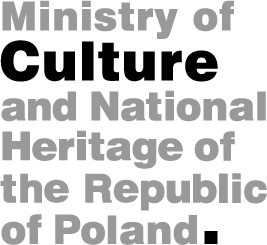|
|
Włodzimierz Fiszer "Grunwald Today" (on the 525 Anniversary of Grunw. Battle) A talk delivered on the Pol. Lvov Radjo on 13.VI.35 at 18:30 hours page 4 armed forces, reverberating with battlefield trumpets and the jangle and clang of spearheads. How much of transient glory clad in metal armours of the Teutonic sway and, on top of that – how much of the knightly virility of those heroic victors. Today, the vista of vast Grunwald fields has no semblance of that bloody moment from five centuries ago which devoured, as German sources give it, 100,000 lives. Almost all of the past remains, remembering that stormy time, have disappeared from the earth, while the long-in-the-tooth survivals were finally swept from the face of the earth by the blizzard of the Great War. Nevertheless, a single, peculiar place has existed amidst the fields and forests of today's Grunwald and tourists are led to it by a long, tranquil avenue of primordial fir-trees, drowsing in the atmosphere of absolutely intact silence. At the end of the avenue, c. 600 metres from the road to Tannenberg, a big cluster of fir trees composes something like an oasis on this wide terrain covered with low grasses. In the centre of the oasis, the only authentic witness to the Grunwald Battle stands – a huge, hoary granite block. The inscription on it says that in this place the Grand Master of the Teutonic Order Urlich v. Jungingen fell in the battle. However, for a Pole this modest monument to Grunwald has additional and closer sounding linked to the interesting history of this monument. It was built in 1901, thanks to the efforts of page 5 East-Prussian Commission for the Conservation and Construction of Monuments to the Historic Past on the initiative of then Prussian landrat von Brandt, who owned the Tannenberg property. The stone block was transported from the battlefield of Grunwald to the building site. The stone had rested intact for hundreds of years as a huge mass of granite in the forest between Grunwald and Ludwigsdorf, close to the road linking these two settlements. In a folk dialect [this stone is commonly dubbed as] Jagiełło's stone because, as the tale tells it, this Polish king rested on it after the battle had finished. Excursion-makers to the stone in the company of a guide are usually told to note the fact that an inscription on the stone was deliberately carved from the western side to constitute an eternal warning to the German nation and reminder about the perpetual Slavic threat. It ought to be noted here that both the Grunwald Battle and the Tannenberg Battle in 1914 are considered by Germans to be consecutive stages of the pan-Slavic pursuit and expansion to the West, that is something they have dubbed as "Altslavischer Sieg des Slaventums über Germanentum". As I have had an opportunity to confirm, this peculiar outlook has haunted Prussian public opinion, after beings suitably manipulated. However, it is a noteworthy fact that it has also been sustained and cultivated by many a representative of Prussian literature and science. page 6 the interpretation of the Polish victory under Grunwald is no less important on the territory of Prussia. Its premise is to ascribe the victory to some supernatural intervention, deciding upon the successful end of the battle and turning the scales of victory interchangeably to one or the other side, notwithstanding the courage and/ or knightly efforts of fighters. [Anyway] in as much as the Grunwald victory without this supernatural intervention remains an unlovable puzzle, every cultured Pole finds it obvious that Jagiełło and Witold's victory was first of all an outstanding manifestation of this indefatigable spiritual power which emerges from the strict union between the proper, main Poland with its borderlands on the Niemen River. The Polish-Lithuanian victory over the iron storm of the voracious Teutonic Knights was rather an intellectual than material and/or physical triumph, constituting an unquestionable confirmation of moral values of the Nation. And this is the real sense of this victory in not only historical, national and educational sense but political as well. Unfortunately, this fact is often forgotten among ourselves, no wonder Prussia does not remember it, too. Nevertheless, there are moments so pivotal that even today – 525 years after the Grunwald victory – they have not lost anything of its live actuality but, even more, at any time whatsoever, they are worth emphasising". (Sic!) Translated by Marzena Beata Guzowska
1
2
|

|
|||
| |||||
